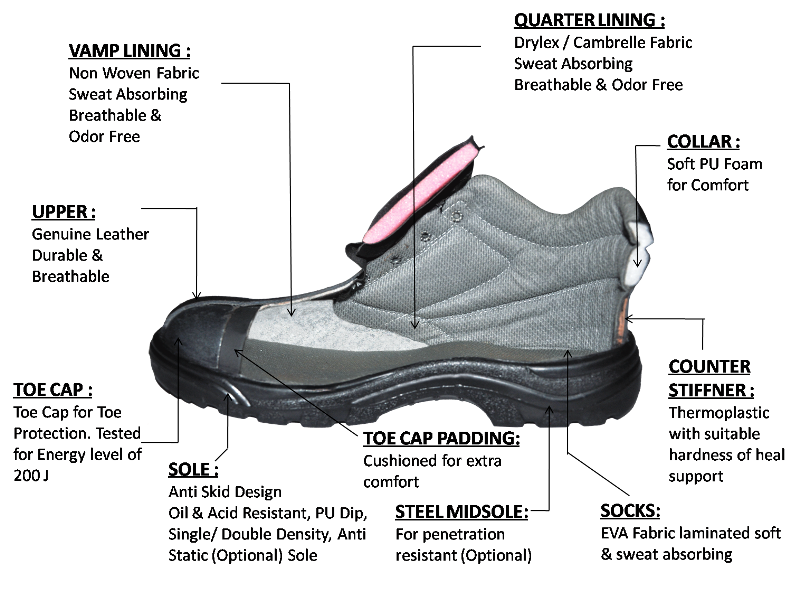Common injuries sustained due to non use of safety footwear :
Crushed feet, broken bones and amputations of toes and feet. These types of injuries are prevalent in construction, logging, long shore, fishing and oil rig operations.
• Punctures to the soles of the feet. Any employee working with nails, wire, staples and scrap metal is vulnerable.
• Cuts, lacerations and severed toes can be the result of working with chain saws, rotary mowers or other machinery without adequate protection.
• Burns resulting from chemical and molten metal splashes or other flammable and explosive materials are frequent in the mining and manufacture of heavy metals and the production of chemicals.
• Electric shocks can be caused by static electricity or direct contact with the source. Unprotected construction workers and electricians are often victims.
• Sprains, fractures and broken bones can occur literally anywhere where there's a slippery floor, cluttered walkway or simply inadequate lighting. Teachers, shop assistants and office workers are not excluded from foot injury!
What to look for in a safety shoe ?
Safety footwear is worn for a variety of reasons, including motorcycle riding, restaurant work, construction, and other industries. When buying safety footwear, your first goal should always be safety. Fashion comes second, especially when you are purchasing work footwear.
Depending on your footwear requirements, you may or may not have room for style when selecting safety boots ore shoes. Some occupations require sturdier footwear than others. Your needs may include a slip-resistant sole, a steel toe, a water resistant coating, insulation, special kinds of support, or other features that are only available in a relatively narrow range of footwear. These features may not even be optional, depending on your workplace rules, further limiting your choices. Despite this, you can find a range of footwear styles that still satisfy the safety requirements.
Cross Sectional View

|